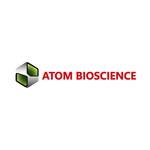Preliminary data suggest Atom�s compound reduces uric acid levels to prevent gout flare-ups without the adverse side effects of existing treatments
JIANGSU, China–(BUSINESS WIRE)–Atom Bioscience (Jiangsu Atom Bioscience and Pharmaceutical Co., Ltd.), a clinical stage biotechnology company developing new treatments for inflammatory and metabolic diseases, announced today the results of a randomized double-blind, placebo-controlled Phase 2a clinical trial of ABP-671 to treat chronic gout. The study of APB-671 achieved its primary endpoint of reducing serum uric acid (sUA) levels to less than 6 mg/dL, which is below the clinically defined threshold of 7 mg/dL for hyperuricemia, the cause of gout. Significantly, no safety concerns were reported.
�These results demonstrate that ABP-671, our investigational drug for the treatment of gout, lowers uric acid levels considerably, which is a major step forward for the control of chronic gout. I am very excited by these results,� said Atom CEO, Chairman, and Founder Dr. William Shi. �Based on these findings in the clinic, our unique, patented, orally-available molecule can be delivered at a lower dose than currently approved medications while simultaneously reducing uric acid to lower levels. Equally important, we did not note any significant safety concerns in the patients studied.�
Dr. Shi added, �We are currently planning for a global pivotal trial to confirm these Phase 2a results and bring relief to patients who suffer from this painful and debilitating disease.�
�This very encouraging Phase 2 data could be a future breakthrough treatment for gout patients who have limited treatment options right now,� said Dr. Kenneth Saag, M.D. M.Sc., Professor of Medicine, in the Division of Clinical Immunology and Rheumatology, University of Alabama, Birmingham. �Data show that all three dose groups of ABP-671 meet the primary endpoint without significant side effects in this growing patient population.�
Gout is one of the most common types of inflammatory arthritis affecting more than 55 million people worldwide. It is caused by hyperuricemia, a high concentration of uric acid in the blood (about 7 mg/dL). Acute gout is characterized by sudden, severe attacks of pain, swelling, redness and tenderness in the joints due to the accumulation of urate crystals within the joints. Gout commonly presents other serious health problems and is associated with a number of comorbidities including cardiovascular disease, obesity, diabetes and kidney impaired renal function. To control chronic gout, the American College of Rheumatology recommends achieving and maintaining sUA levels < 6 mg/dL for all patients receiving urate lowering therapy. In fact, sUA levels for the most effective treatment of gout should be in a range of 4.0 – 5.0 mg/dL, which will result in more effective dissolution of urate crystals in joints and soft tissues over time and reduce frequency of acute gouty attacks and size and/or number of clinically detectable urate crystal deposits (tophi).
Current medications in the gout therapeutics market are generally accompanied by serious side effects, such as severe hepatotoxicity, nephrotoxicity, higher risk of sudden death, heart disease, or GI discomfort. Febuxostat, for example, is associated with cardiovascular complications resulting in 2.7% sudden death and is required by the FDA to have a black-boxed warning on the package insert. Allopurinol which is the most used urate-lowering drug in the US, lowers sUA levels < 6 mg/dL and < 5 mg/dL for only approximately 40% and 22% of patients, respectively. The poor efficacy and safety profiles of available gout drugs creates significant unmet clinical demand for patients suffering from chronic gout.
In Atom�s Phase 2a trial, conducted in Australia, 60 patients were randomized to one of three treatment groups receiving a 2 mg, 4 mg or 8 mg daily dose of ABP-671 or to placebo. At time of enrollment, mean sUA levels of all patients in the trial were greater than 8 mg/dL. Mean sUA levels for all three APB-671 dose groups met the primary endpoint of 6 mg/dL. Additionally, sUA were reduced significantly (sUA < 5 mg/dL) compared to baseline values, and higher doses of ABP-671 proportionately reduced sUA levels by a greater amount.
ABP-671 is a small molecule inhibitor of the urate transporter (URAT1) protein, which is involved in the reabsorption of uric acid by the kidneys. In gout patients, ABP-671 reduces the reabsorption of uric acid, increasing its excretion in urine to prevent gout attacks.
About Atom Bioscience
Atom Bioscience (Jiangsu Atom Bioscience and Pharmaceutical Co. Ltd.) is a fast-growing innovative drug company, focused on development of best in class small molecule therapeutics for treatment of inflammatory and metabolic diseases. The company�s lead product, ABP-671, is in clinical development for treatment of chronic gout. Another small molecule, ABP-6016, has shown remarkable potency for treatment of non-alcoholic steatohepatitis (NASH) with an excellent safety profile. For more information please visit: https://atombp.us/
Contacts
Media Contact:
Daniel Eramian
Opus Biotech Communications
http://opusbiotech.com/
425-306-8716
Business Development Contact:
Roy J. Wu, MBA
Sr. Vice President, Business Development
Atom Bioscience and Pharmaceutical Co., Ltd
Email: [email protected]

.jpg)





